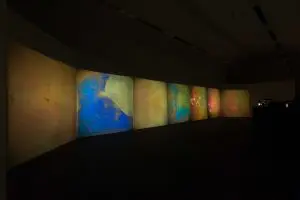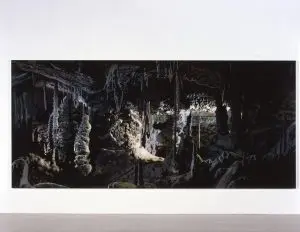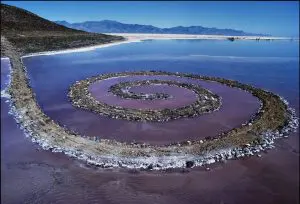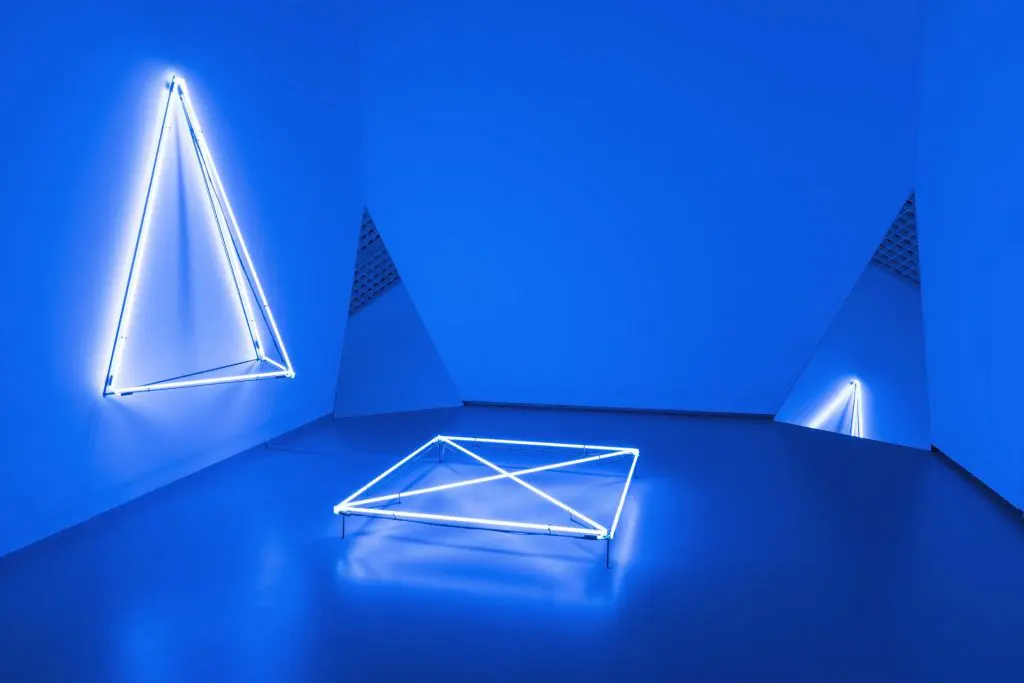A major exhibition in three parts with works from the photographic collections of Fondazione per l’Arte Moderna e Contemporanea CRT, Castello di Rivoli Museo d’Arte Contemporanea, and GAM – Galleria Civica d’Arte Moderna e Contemporanea.
On May 2, 2024, as part of the EXPOSED Torino Photo Festival program, Expanded will open to the public. The exhibition project offers a three-chapter reading of the Fondazione per l’Arte Moderna e Contemporanea CRT’s photographic collection, bringing together three prestigious institutional venues into a single coherent itinerary:
- OGR Torino with Expanded Without (May 2 – July 28, 2024), focusing on works produced off-camera, where the image is generated without using traditional photographic means;
- Castello di Rivoli Museo d’Arte Contemporanea with Expanded With (May 2 – August 25, 2024), curated by Marcella Beccaria, showcasing works where the photographic medium is the starting point to explore different types of relationships with the landscape, featuring works by pioneers of Land Art, Arte Povera, and Body Art;
- GAM – Galleria Civica d’Arte Moderna e Contemporanea di Torino with Expanded – I Paesaggi dell’Arte (May 3 – September 1, 2024), curated by Elena Volpato, dedicated to photographers who have captured the multiple aspects of art, portraying its landscapes composed of works and architecture, the artists, and their work in the studio or natural landscape.
“In synergy with the Fondazione CRT, the Fondazione per l’Arte Moderna e Contemporanea CRT is proud to support and promote EXPOSED, the first edition of Turin International Festival Foto Festival” stated Patrizia Sandretto Re Rebaudengo, President of the Fondazione per l’Arte Moderna e Contemporanea CRT. “The festival will be held in May involving the city’s main cultural institutions and independent bodies in a rich programme of exhibitions and events on photography. The Foundation is a partner of the programme, exhibiting most of the photographs in the Collection of Fondazione per l’Arte Moderna e Contemporanea CRT for the first time. It is a triple-location project: the OGR Torino showing Expanded Without, with images produced without a camera, the Castello di Rivoli with Expanded With, curated by Marcella Beccaria, and GAM with Expanded – I Paesaggi dell’Arte curated by Elena Volpato.”
From May 2 to June 2, the exhibitions can also be accessed with the EXPOSED PASS, available for €25 at the INFOPIEMONTE – desk ABBONAMENTO MUSEI ticket office on Via Garibaldi 2 or on the EXPOSED website at this link: https://www.exposed.photography/ticket
EXPANDED WITHOUT / OGR Torino
In Expanded Without (May 2 – July 28, 2024) at the Binario 1 of OGR Torino focus is on off-camera works, where images are generated without resorting to traditional photographic means: installations and environments, authentic expanded experiential fields, where visitors, observers, become part of the process of image construction.
The exhibition opens with Frammenti di riflessione (Exoteric gate) by Nanda Vigo (1976), a space of inner crossings generated by neon light vibrations and reflections in the mirror. Nanda Vigo has worked at length on light as an element to build space and an opportunity to cancel its physical boundaries. Mirrors and light contribute to the formation of images that our minds can process and develop.
The second is the imposing Waterfall by Teresita Fernández (2000) that compresses all the dynamic and thunderous energy of the natural event it refers to in its immobile and silent presence. It is created using long strips or bands of polychrome acrylic material: Fernández’s Waterfall speaks to the persistence of shape and form through the idea of permanent change. The movement of water is recalled by the alternating blue, azure, and white strips: like frames, they follow each other like the breakdown of moments which in nature correspond to water falling.
At the centre of exhibition itinerary L’osservatore non l’oggetto osservato (1981-2003), by Remo Salvadori. In his work, the artist transfigures a camera tripod into copper. The presence of his shadow in some of the images of the history of photography refers to the gaze of the person who took the photograph. Salvadori’s multiplication of the silhouette into a light form in this work, shatters the photographer’s absolute point of view turning it into a set of relative visions that mutually activate each other, not just as the object and subject of the vision, but as a common reflection on looking and seeing oneself look.
The exhibition closes with Liquid Crystal Environment (1966-2017) by Gustav Metzger, a large environmental installation with ever changing coloured and psychedelic projections. The work is one of the largest the artist developed with liquid crystal technology, whose studies go back to the early discoveries by the botanist Friedrich Reinitzer in 1888 subsequently developed by the physicist Otto Lehmann who created the expression liquid crystal in 1889.

EXPANDED WITH / Castello di Rivoli Museo d’Arte Contemporanea
Expanded With (May 2 – August 25, 2024), curated by Marcella Beccaria, will inaugurate on the third floor of the Manica Lunga of the Castello di Rivoli Museo d’Arte Contemporanea. From the performative actions of the 60s and 70s, the exhibition includes works by pioneers of Land Art, Arte Povera and Body Art, also including the use of photography as a conceptual tool, reaching further more contemporary experiences.
The exhibition investigates the image as an expanded field, citing the writings of American art theorist Rosalind Krauss. In 1979, Krauss published Sculpture in the Expanded Field, a seminal text in which she analyzes how the practice of artists in the years between 1968 and 1970 changed the traditional concept of sculpture to “site-construction,” delving into dichotomies such as “landscape and non-landscape” and “architecture and non-architecture.” Krauss notes how artists revolutionize the idea of the work of art, using a variety of media, including photography, mirrors, installations and actions in the landscape, video, as well as sculpture itself. Krauss’ theory gave rise to further critical elaborations that interpreted works produced in the following decades by applying the concept of expanded field also to film.
Expanded With presents works in which the photographic medium is the starting point for investigating different types of relationships with the landscape, body, construction of the image and identity. From the performative actions of artists from the 1960s–70s, the exhibition presents works by pioneers of Land art, Arte Povera, and Body art, also including the use of photography as a conceptual tool, as well as more contemporary experiences. In Expanded With, photography is physically present as protagonist.
The exhibition presents works belonging to the Fondazione per l’Arte Moderna e Contemporanea CRT on loan to Castello di Rivoli, in dialogue with works from Castello, in an organic itinerary that for the first time enhances the major photographic works in both Collections.
Covering a broad international panorama, the exhibition includes works by 23 artists active in different countries, such as Angola, Belgium, Brazil, Cuba, Germany, Northen Irland, Italy, the Netherlands, Portugal, United Kingdom, Slovenia, United States: Lothar Baumgarten, Edson Chagas, Thomas Demand, Jan Dibbets, Hans-Peter Feldmann, Gilbert & George, Roni Horn, Steffani Jemison, Anna Maria Maiolino, Ana Mendieta, Mario Merz, Luigi Ontani, Dennis Oppenheim, Giulio Paolini, Paola Pivi, Thomas Ruff, Edward Ruscha, Elisa Sighicelli, Ettore Spalletti, Thomas Struth, Wolfgang Tillmans, Ulay, Jan Vercruysse.

EXPANDED – I PAESAGGI NELL’ARTE / GAM – Galleria Civica d’Arte Moderna e Contemporanea di Torino
Expanded – I paesaggi dell’arte (May 2 – September 1, 2024) in the Spazio del Contemporaneo of GAM – Galleria Civica d’Arte Moderna e Contemporanea di Torino, curated by Elena Volpato, is dedicated to a number of photographers who have succeeded in portraying the many forms of art and portraying in the broadest sense its landscapes, composed of works of art and architecture, of the artists’ faces and their work in the studio or in the natural landscape.
Thanks to the support of Strategia Fotografia 2023, backed by the Directorate General for Contemporary Creativity of the Ministry of Culture, GAM has been able to renew its commitment to collecting by acquiring 22 photographs by Gianfranco Gorgoni, taken between 1970 and 1974. The photographs are dedicated to the different stages of the creation of Robert Smithson’s Spiral Jetty, as well as to works by Michael Heizer, and portraits of artists such as Bruce Nauman, Dan Flavin, Agnes Martin and Ellsworth Kelly.
In becoming part of the permanent collection, Gorgoni’s images, the hypnotic force of his shots taken from above the Spiral Jetty, has enabled a virtuous spin-off with the photographic interpretation of art being reinterpreted through the continuous emergence of a desire for dizziness.
A desire that has been present ever since the first shots taken by photographers like Nadar and, a little later, like Mario Gabinio, who rose in the sky in balloons to capture the beauty of their cities from above and to illustrate the life-giving deformation of the convexity of the world and the offset from the plane of the horizon within the perspective grid.
The most vertiginous image in the history of photography is a snapshot based on the imagination of one of the most important photographers of the twentieth century: Luigi Ghirri, in front of one of the first images of the Earth seen from the Moon, glimpsing inside it all the images of art history, one inside the other, telescopically submerged. “Graffiti, frescoes, paintings, writings, photographs, books, films,” he wrote, “simultaneously the representation of the world and all representations ofthe world at once”.
While Gorgoni occupies the centre of the exhibition, in a continuous circular motion of spiralling through space, Ghirri’s works are dislocated at different intervals, marking – in dialogue with the other artists – the multiple aspects of the vertigo that photography creates by placing itself in relation to art and becoming a representation of artistic representations. Whenever it places its tripod in front of art, photography presents a dizzying doubling sense, because it is vision facing vision. In this case, it is not the fight for an image, but the doubling of its power, the embrace of a gaze that confronts the space of interminable meanings contained in the work of art and which, by producing a representation of it, itself becomes infinite.
The works on display are all part of a long history of collecting that has enriched the museum’s holdings over time, including examples of great historical value such as the daguerreotype of the church of the Gran Madre di Dio made by Enrico Federico Jest in 1839, and the Photographic Archive of the Fondazione Torino Musei from which come the prints by Mario Gabinio, produced between the end of the nineteenth century and the early decades of the twentieth century. GAM’s collections grew in the early 2000s, under the direction of Pier Giovanni Castagnoli and thanks to funds from the City of Turin, with which the museum was able not only to provide extensive representation in its collections of the work of the most important Italian photographers of the second half of the twentieth century, but also to commission a broad survey and reinterpretation of the city’s landscape, including, on display, shots by Gabriele Basilico, Olivo Barbieri and Armin Linke. In the same years, the photography collections have undergone a further important addition thanks to the Fondazione per l’Arte Moderna e Contemporanea CRT. In addition to works by Ghirri, the exhibition includes numerous photographs by Ugo Mulas, Mimmo Jodice, Aurelio Amendola and Claudio Abate.
The exhibition also presents a work created by Jacopo Benassi specifically for the occasion: Paesaggio di un paesaggio in un paesaggio. “The title is in itself dizzying” writes Volpato, “a leap forward that has the inexorability of a fall. Invited to take some photos inside the GAM’s storerooms, Benassi has chosen to crop his shots to show only some skies taken from nineteenth-century paintings, and from such a close viewpoint that the pictorial film has taken on the likeness of an epidermis. Devoid of compositional coordinates, without any sense of where their horizon line fell, they become immense and romantically modern. Benassi has turned his two shots into a sculpture on wheels, disengaging himself from the reassuring coordinates of the wall and letting the work carry its own indefinite otherness around the space with respect to any predetermined idea of photography and art.”
The exhibition is accompanied by a publication, Paesaggi dell’arte. Vertigini 1839-2024.

Robert Smithson, Spiral Jetty, 1970 – GAM – Galleria Civica d’Arte Moderna e Contemporanea, Torino
© Estate of Gianfranco Gorgoni
GLI ARTISTI
The exhibition Expanded presents works from the collection of Fondazione per l’Arte Moderna e Contemporanea CRT on loan at Castello di Rivoli and GAM by artists such as Claudio Abate, Aurelio Amendola, Edson Chagas, Thomas Demand, Jan Dibbets, Hans-Peter Feldmann, Teresita Fernández, Luigi Ghirri, Roni Horn, Steffani Jemison, Mimmo Jodice, Anna Maria Maiolino, Ana Mendieta, Mario Merz, Gustav Metzger, Ugo Mulas, Luigi Ontani, Giulio Paolini, Paola Pivi, Thomas Ruff, Remo Salvadori, Ettore Spalletti, Thomas Struth, Ulay, Nanda Vigo; from the collection of Castello di Rivoli Museo d’Arte Contemporanea by artists such as Lothar Baumgarten, Gilbert & George, Luigi Ontani, Dennis Oppenheim, Thomas Ruff, Edward Ruscha, Elisa Sighicelli, Thomas Struth, Wolfgang Tillmans, Jan Vercruysse; and from GAM – Galleria Civica d’Arte Moderna e Contemporanea by artists such as Olivo Barbieri, Gabriele Basilico, Jacopo Benassi, Mario Cresci, Mario Gabinio, Gianfranco Gorgoni, Enrico Federico Jest, Mimmo Jodice, Armin Linke, Riccardo Moncalvo, Paolo Mussat Sartor, Paolo Pellion.


